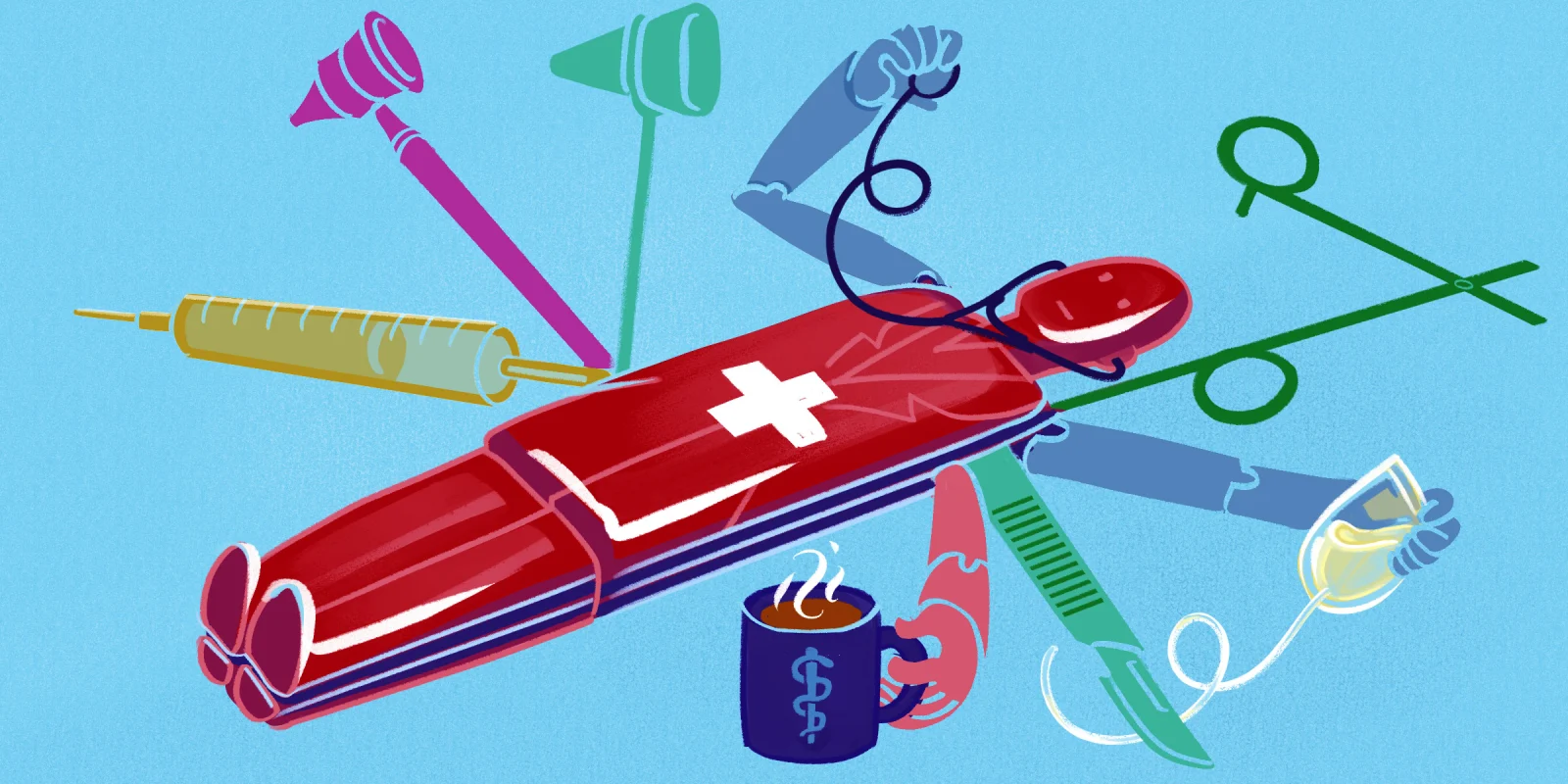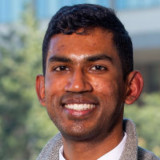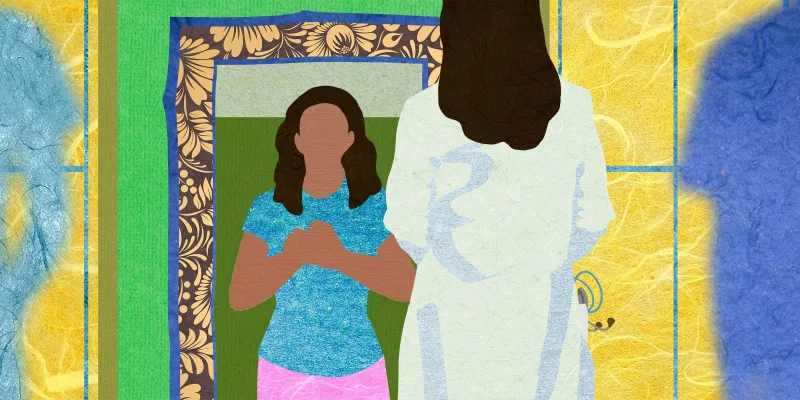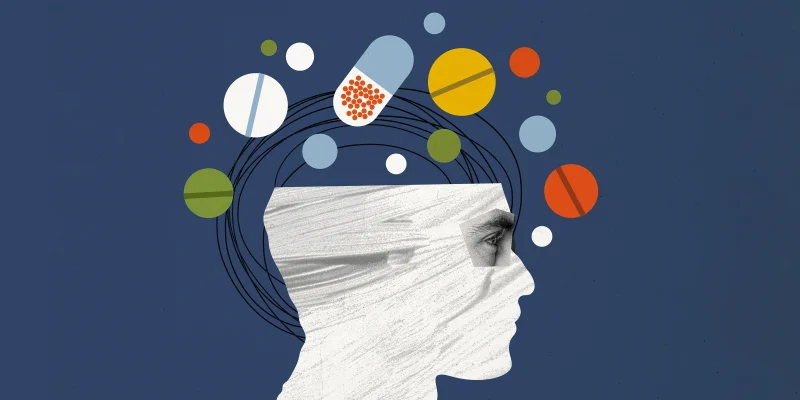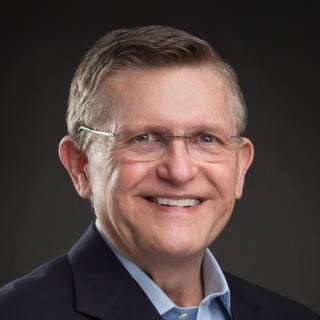My first patient of the day has yet to show up. Our clinic policy is to allow for up to 15 minutes of tardiness before, at the discretion of the clinician, asking patients to reschedule. At 8:59 a.m. he has checked in. I have a full slate of patients, and already I am running behind. I gird myself and rehearse the apology I will repeatedly offer to subsequent patients.
I listen intently as a middle-aged patient describes recurrent, post-prandial abdominal pain that relents with use of acid-lowering medications. The persistence of the pain worries him, and he wonders aloud, “Could this be cancer?” His history is reassuring against malignancy, and we decide to increase his dose of proton pump inhibitor and to reassess in 8 weeks. An elderly patient reveals a bothersome bump on his buttocks that had existed for several years until it caused him exquisite pain this week. His epidermal inclusion cyst appears to have become superinfected. It needs to be drained, and my clinic preceptor encourages me to do the procedure myself. The gentleman sighs with relief as the pain abates following the incision and drainage. I nervously eye the clock.
The day hurdles forth. A young patient with recurrent syncope with a negative cardiac work-up requests assistance in completing Department of Motor Vehicles forms to certify that he can drive again. I flip through the 6 pages of questions and feel a pain course between my eyes, unsure if this is from the N95 digging into my nose or from the bureaucratic documentation that will likely gather dust in a filing cabinet. I scramble to find a video-capable exam room for a video visit with a young man noting respiratory symptoms. I lament not being able to gather his vital signs and complete an exam, and I schedule him to see a colleague in-person. An elderly patient notes full body pain. However, when I determine he cannot hear the Spanish video interpreter, my stomach sinks as I realize he will need to return.
In total I see nine patients on this day, a far cry from the often 20-plus patients cared for by full-time PCPs. Primary care, in my opinion, is the most challenging specialty in medicine as the purview of PCPs is unbounded; I wince when I see specialists write in their notes, “defer to PCP,” for a symptom that they deem outside of their disciplinary silo. While potentially gratifying, days in primary care clinic leave me exhausted, as I contend with the bevy of addressing routine health care maintenance, troubleshooting acute concerns that are often protean in their presentation, optimizing management of chronic conditions, following up on previously ordered labs, filling out forms, appealing prior authorization denials, responding to queries regarding information for hospitalized patients, and answering EPIC in-basket messages. Primary care is not for the faint of heart. A PCP’s job is never done.
To say that COVID-19 has further strained our country’s primary care infrastructure is an understatement. The stress of working in health care has hit primary care particularly hard. As individuals scrambled early in the pandemic to establish care with a PCP in order to join the queue for testing and vaccines, PCPs seemed to either head for the exit or seek ways to decrease their clinical load. The reasons for this are manifold and include both acute and chronic stressors. First, PCPs continue to be undercompensated compared to their specialist colleagues, despite their serving as the linchpin of our health care system. Despite ongoing attempts to risk-adjust panel size, many PCPs continue to have panel sizes that exceed their capacity.
Second, the incentives within primary care continue to be in flux. An increasing number of PCPs are participating in accountable care organizations and alternative payment mechanisms that stress value-based care and performance-based incentives while a majority of their specialist counterparts continue to bill based on fee-for-service. Insurance companies are, therefore, increasingly leaning heavily on PCPs to curtail excessive expenditures. Counseling patients, providing reassurance, and implementing a stepwise plan rather than a shotgun approach to diagnostics and referrals are part and parcel of this judicious, value-based approach and take time. The harried day in primary clinic does not always afford such luxuries and runs up against the eagerness of patients to know immediately what ails them and to achieve succor expeditiously. This is further confounded by the encroachment of private equity and trend toward horizontal and vertical consolidation in primary care; such phenomena while preaching “economies of scale” are often belied by goals of maximizing profits while minimizing costs that are at loggerheads with person-centered care.
Third, COVID-19 has only worsened illness anxiety and heightened vigilance over sore throats and bodily aches, increasing demand for primary care and lengthening wait times to see a PCP. Medicine has furthered a paradigm of medicalization and pharmaceutical fetishism in which the goal appears to be to rid individuals (at least those with the financial means) of discomfort through primary prevention and medication. Whether annual physicals, aspirin for primary cardiovascular prevention, and prostate-specific antigen screening for prostate cancer actually yield benefit are subjects of ongoing debate. A PCP’s job relies on triage of complaints rife with diagnostic uncertainty and making Bayesian risk calculations in determining for whom to pursue further diagnostics and treatment; limited health literacy among the general population creates additional challenges, further worsened by unverified health education material online.
Fourth and finally, COVID-19 has expanded the role of video visits, telephone encounters, and digital messaging in the provision of care. While potentially expanding access to care by overcoming transportation insecurity and time constraints for patients, such visits have altered the complexity of the provider-patient relationship and can foster frustration. I have had several patients conduct appointments while driving or shopping or have gritted my teeth when a patient notes worrisome symptoms, but I cannot fully examine them. Health record systems have enabled patients ever greater access via secure messaging with physicians, and yet, the expectation (as endorsed by my health system) that physicians respond within a day to such messages is unrealistic on top of existing clinical duties.
The flight of PCPs from the health system in which I work has led to us no longer accepting new patients while facing a crisis in which thousands of patients are no longer empaneled. In view of the aging U.S. population, such trends are dire. No one solution will address these issues, but a few approaches might staunch the bleeding. First, federal funding for primary care practices must be increased; federal relief dollars allocated during the COVID-19 pandemic have helped stabilize flagging practices, but more needs to be done to expand our public health and primary care infrastructure. We need to bolster integrated primary care medical homes with sufficient staffing to meet the needs of the aging population and to reduce the burden on existing PCPs. Second, Congress must increase the number of physician trainees and incentivize careers in primary care; the Resident Physician Shortage Reduction Act is a start but must be coupled with expanded and hassle-free loan forgiveness and more competitive compensation for those pursuing primary care careers. Finally, the conundrum of payment incentives, cost-containment, quality of care, and access could be addressed by a Medicare for All system that minimizes the administrative burden of PCPs, streamlines standards of care, and reduces patient anxiety around ability to access care. The regnant political gridlock makes these solutions heavy lifts; in the meantime, PCPs will continue to struggle under the weight of the responsibility foisted upon them.
How would you fix primary care? Share your solutions in the comments.
Dr. Anand Habib is a third-year internal medicine resident at University of California, San Francisco. Originally from Houston, Dr. Habib completed his undergraduate work with honors at Stanford, worked as a Global Health Fellow at a clinic in Haiti's central plateau, finished a masters degree with distinction in Medical Anthropology at Oxford University as a Rhodes Scholar, and earned a medical degree from Harvard Medical School. He has previously studied the use of therapies for hematologic malignancies and oncologists' feelings of prognostic uncertainty in advanced lung cancer and is currently pursuing interests at the nexus of ethics, health policy, and distributive justice. He is a 2021–2022 Doximity Op-Med Fellow.
Illustration by April Brust
